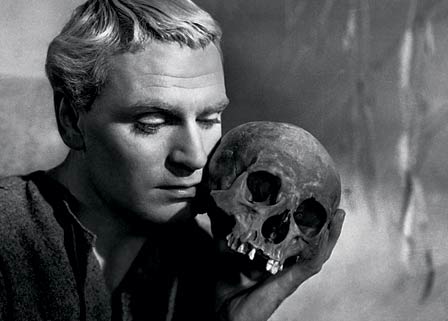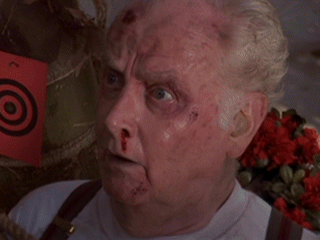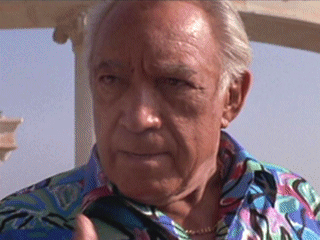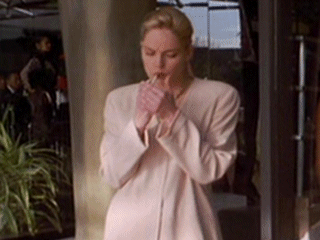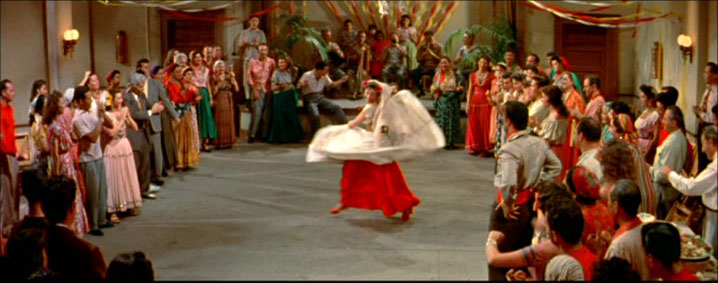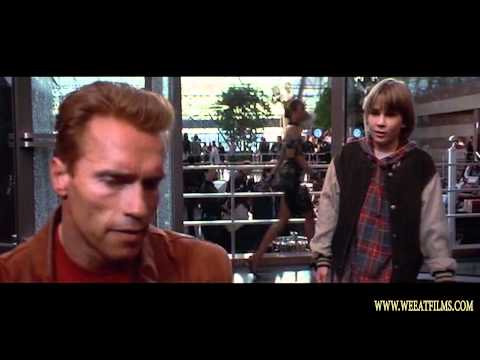From the Chicago Reader (June 24, 1993). — J.R.
LAST ACTION HERO
** (Worth seeing)
Directed by John McTiernan
Written by Shane Black, David Arnott, Zak Penn, and Adam Leff
With Arnold Schwarzenegger, Austin O’Brien, Charles Dance, Anthony Quinn, Tom Noonan, Mercedes Ruehl, F. Murray Abraham, and Robert Prosky.
The word is out: Last Action Hero is an unmitigated disaster. The sound of studio panic was plainly audible in a report in the June 17 New York Times that Columbia Pictures threatened to sever all communications with the Los Angeles Times if it didn’t guarantee it would “never again run a story written or reported by Jeff Wells about (or even mentioning) this studio, its executives, or its movies.” Wells’s crime was a June 6 article in the Los Angeles Times reporting that a test-marketing preview of Last Action Hero held in Pasadena about two weeks earlier had been disappointing. The article contained “categorical denials” from several studio executives that such a screening had ever taken place, but clearly this wasn’t enough for the industry people. As Wells told the New York Times, “You’re talking about a studio in a major meltdown mode. These guys are blitzing out here.”
I read this story only hours before seeing another “disappointing” preview of Last Action Hero in Chicago, after several weeks of hearing rumors that the picture was a “mess” and in deep, deep trouble. I can’t say that the atmosphere at the preview I attended was electric, but the people around me seemed to be enjoying themselves as much as I was.
It’s interesting how a certain feeding frenzy often takes over certain portions of the media when it’s collectively decided, even before most reviewers see a picture, that it’s a clear “hit” or “miss” (with box-office potential and aesthetic interest always regarded as interchangeable). I’ve often suspected that the grapevine disaster bulletins stem in part from the exaggerated responses all big-budget monoliths now routinely elicit from the media, as well as from an unconscious collective urge to compensate for the hype lavished on other pictures. Just about everyone I know who’s seen Jurassic Park finds it only so-so, but you’d never guess that from what the media have to say about it. So it’s quite possible that some reviewers who feel queasy about having overpraised one blockbuster under pressure take out their frustration on the next blockbuster to come along.
With or without storm warnings, the media still feel obliged to pay some lip service to a movie that cost somewhere between $60 and $80 million, as Last Action Hero did. So when Arnold Schwarzenegger appeared on Larry King’s show, King naturally told us he thought Arnold’s new movie was swell. Both this knee-jerk endorsement and the New York Times story made me want to hate the movie, but obviously my reaction had nothing to do with the picture’s qualities; it was an angry response to the hysteria and heaps of millions expended on determining my response in advance.
***
I have to admit that Last Action Hero is clunky, starting with its title. (Why “last” and why no “the”? Did it test market better that way?) Much of the acting is poor — starting with Schwarzenegger, who’s never shown the slightest aptitude in that line. His mass appeal has always been as an object, not as a person, and his best films, including The Terminator and Total Recall, are canny enough to work this limitation into their plots. This movie has a similar aim in mind — which suggests that Schwarzenegger has a better sense of his limitations than many reviewers — but it lacks the style to bring it off.
The pacing is uneven, and overall the film is rather graceless. But if I had to pick only one of the current Big Three —Cliffhanger, Jurassic Park, or this movie–to see a second time, I’d opt for this one, warts and all, without hesitation. The relative craft and efficiency of the other two are expended on ideas and emotions that seem to me ignoble, and they’re fashioned without love or imagination. This movie, for all its confusions and unevenness, still has some lasting traces of conceptual charm and evocative fantasy. (At its best it comes closer to The 5000 Fingers of Dr. T. — a calamitous flop back in 1953 that I’ve cherished for 40 years — than to any action-adventure blockbuster that comes to mind.) Moment to moment, it often makes little sense, but in its broad strokes it can claim a certain amount of originality and audacity — even a few smudges of poetry — amidst all its untidy bric-a-brac.
***
It begins with an only slightly parodic movie-within-a-movie, in which New York police sergeant Jack Slater (Schwarzenegger) makes his way past a line of armed policemen encircling a building to rescue a group of kids from a monstrous villain named Ripper (Tom Noonan). The image goes out of focus, and we shift to Danny Madigan (Austin O’Brien), an 11-year-old boy watching this movie in a nearly empty third-run theater on 42nd Street, who goes up to the projection booth to tell the projectionist — an old timer named Nick (Robert Prosky) — about the problem. A movie fan himself, Nick invites Danny back for a personal preview of the most recent Jack Slater feature, the fourth in a series, which is about to receive its premiere at a nearby first-run theater on Times Square.
A bit later we see Danny at school, where his teacher (Joan Plowright) describes Shakespeare’s Hamlet as “one of the first action heroes,” and Danny, impatient with the wordy prevarications of Laurence Olivier’s Hamlet in a black-and-white film clip, promptly imagines Jack Slater taking over the part. (It’s a black-and-white fantasy with color injected only to represent fire — the end of Slater’s cigar and various explosions — and a red cloak.)
Still later, Danny’s at home watching Wile E. Coyote in a Road Runner cartoon on TV, and his mother (Mercedes Ruehl), a widow, is bawling him out for skipping school to go to movies. After she leaves, Danny is accosted in the grungy hallway outside the apartment by a burglar carrying a switchblade. Danny is next seen reporting this incident in a grungy police station before joining Nick for the promised preview of Jack Slater IV. (All the interior locations so far, apart from those inside the decrepit theater, are extremely claustrophobic, making this portion of the movie rather oppressive in its airlessness.)
As his symbolic ticket of entry to the preview, Nick presents Danny with a “magic” ticket given to him over half a century ago by Harry Houdini. Jack Slater IV is set in Los Angeles, where Slater’s second cousin (Art Carney) is kidnapped by a Mafia boss (Anthony Quinn) and a dapper English crook (Charles Dance). The second cousin’s house blows up shortly after Slater arrives, and suddenly some sticks of lighted dynamite tossed at him by thugs wind up in the theater aisle. Danny, who’s been kibitzing on the action from his seat, runs from the dynamite and finds himself, thanks to his magic ticket stub, in the back of Slater’s convertible as Slater races away from the villains.
The first of many odd conversations ensues between Danny and Jack. Danny knows that he and Jack are inside a fanciful movie, while Jack perceives everything around them as reality. The dynamite tossed by the thugs at them is labeled “Acme Dynamite” — a staple (along with countless other Acme products) in Wile E. Coyote’s arsenal of weapons against the Road Runner — and the police station where Slater winds up is a gaudy and spacious postmodernist emporium with valet parking, a building from which Sharon Stone is seen emerging. Danny, who’s already seen the first part of Jack Slater IV, knows what the villains’ palatial headquarters look like and can consequently help Jack find the place. Jack appreciates this offer but resents being told he’s only fictional. Eventually things get even more complicated when the English crook intercepts the magic ticket and escapes to the “real” New York, where Jack Slater IV is about to premiere (with Schwarzenegger himself in attendance), and where Danny and Jack manage to follow him.
It’s an engaging metaphysical conceit, though one with countless loopholes. Jack has the same angry black boss (Frank McRae) in Jack Slater III and Jack Slater IV, but, unless I missed something, how he and Jack switch from the New York Police Department to the Los Angeles Police Department is never spelled out. The dialectical polarities aren’t merely “movies” versus “reality,” but also spiffy, spacious Los Angeles versus grungy, claustrophobic New York — and this notion gets conceptually confused by the movies-versus-reality idea. In the “real” New York in this movie, presumably set in the present, black-and-white movies like Screaming Mimi (1958), Curse of the Demon (1958), and The Seventh Seal (1956) — as well as Hot Blood, a color movie from the same period — are all miraculously showing on 42nd Street; it’s only slightly more plausible that Olivier’s Hamlet (1948) is being screened in school for the benefit of 11-year-olds. Yet the unreality of movies is represented not only by glamorous car crashes and Slater’s ability to put his fist through a car window without getting hurt, but also by Tina Turner appearing in Jack Slater III as the mayor of New York and by a video-store poster featuring Sylvester Stallone as the star of Terminator 2 in Jack Slater IV. (Many other Acme products also turn up, along with an animated cat detective, presumably a refugee from Who Framed Roger Rabbit.)
With this sort of happy-go-lucky carelessness defining reality and unreality alike — concepts that seem to emerge more from casual gags than from any consistent vision — incoherence periodically threatens to take over. Given all the last-minute changes (apparently standard practice now for hysterical studio executives preparing to launch summer blockbusters), incoherence should probably be considered the sine qua non of this kind of filmmaking. Certainly it’s observable in the spatial absurdities of Cliffhanger and in the sudden disappearance of most of the theme-park staff in the last half of Jurassic Park.
But the incoherence of Last Action Hero, which is much more pervasive, seems vastly preferable to the utterly cynical and predictable coherence of the bulk of Cliffhanger and Jurassic Park — a clarity that has scarcely any poetry or dream value and practically no evidence of imaginative thinking. If you try to grab hold of Last Action Hero as an articulated concept, it comes apart and not all of its jokes work. But if you attend to its dreamlike drifts, settings, and feeling for space, as well as the oddness of some of its humor, you may well find yourself entertained and amused.
It’s nothing new that the makers of Last Action Hero don’t have a clear notion of what separates movies from life, but the makers of the other summer blockbusters aren’t any better versed in reality–unless, that is, reality consists of knowing how to filch dollars from our pockets, as many of our “reality” experts in the media boringly assume. Aesthetically speaking, the confusions of this movie strike me as being far more fruitful and witty than the soulless clarity of robotic machines–those calculated but mindless products that have a tendency to make calculated but mindless robots out of spectators. As it happens, the “last action hero” is played by someone the audience has loved to identify with ever since he played a robotic machine in The Terminator. Unlike the terminator, Jack Slater doesn’t know he’s a robotic machine, but Schwarzenegger clearly does — which is more than can be said for Spielberg or Stallone.


